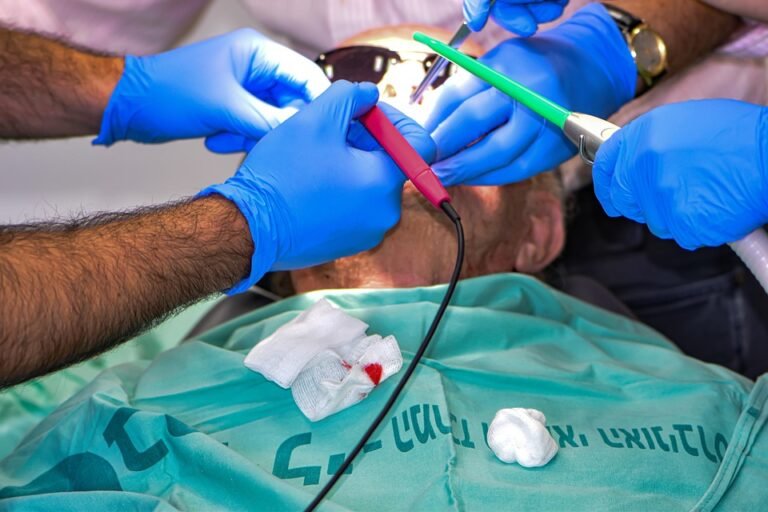What is local SEO for dental clinics
Okay, so I’m opening a dental clinic in Austin, Texas – specifically, in the Westlake area. I know I need to get my website and online presence sorted out, but I keep hearing about "local SEO" and I’m honestly a bit lost.
What exactly is local SEO? I mean, I get the "local" part, but how does it work for a dental clinic? What are the specific things I need to do to make sure people in Westlake who are searching for a "dentist near me" or "Westlake family dentist" actually find my clinic? Is it just about keywords on my website, or is there more to it?
I’m especially interested in hearing about:
- How Google Maps plays a role in all of this.
- What I need to do with my Google Business Profile (I think I have one, but I haven’t really touched it).
- How patient reviews factor in.
- If there are any specific tools or services recommended for this.
- Basically, anything else that’s important for a new dental clinic trying to get noticed locally online.
Answer
Local SEO for dental clinics is a specialized subset of search engine optimization (SEO) focused on improving a dental practice’s visibility in local search results. These results appear when potential patients search for dental services in their immediate geographic area. The goal is to make a dental clinic more prominent in search engines like Google when people are looking for dentists "near me" or using location-specific keywords like "dentist in [city name]." Effective local SEO helps a dental clinic attract more local patients, increase website traffic, and ultimately grow its business.
Here’s a detailed breakdown of the key aspects of local SEO for dental clinics:
1. Google My Business (GMB) Optimization:
-
Claiming and Verifying the GMB Profile: The first step is claiming and verifying the dental clinic’s Google My Business profile. This is a free business listing on Google that appears in local search results and Google Maps. Verification confirms that the business owner is authorized to manage the profile.
-
Comprehensive and Accurate Information: The GMB profile should be filled out completely and accurately. This includes:
- Business Name: Use the exact name of the practice.
- Address: Provide the complete and correct physical address of the clinic.
- Phone Number: Include the primary phone number for the clinic. Use the same phone number across all online platforms.
- Website URL: Link directly to the dental clinic’s website.
- Business Category: Select the most relevant primary category (e.g., "Dentist") and additional categories (e.g., "Cosmetic Dentist," "Pediatric Dentist," "Emergency Dental Service").
- Business Hours: List the accurate hours of operation, including any variations for holidays or special events.
- Description: Write a compelling and informative description of the clinic, highlighting its unique selling points, services offered, and target audience. Use relevant keywords naturally.
- Attributes: Select relevant attributes such as "Wheelchair accessible," "Accepts new patients," "Offers teledentistry," "Appointment required," and payment options.
-
High-Quality Photos and Videos: Visuals are crucial. Add high-quality photos of:
- The exterior and interior of the clinic.
- The dental team (dentists, hygienists, assistants).
- Treatment rooms and equipment.
- Smiling patients (with their consent, of course).
- Consider adding a short video showcasing the clinic and its services.
-
Regular Posting and Updates: Keep the GMB profile active by posting regular updates, such as:
- Announcements about new services or promotions.
- Educational content about dental health.
- Clinic news or events.
- Responding to reviews promptly.
- Q&A Section: Monitor and answer questions in the Q&A section of the GMB profile. This helps address common concerns and provide helpful information to potential patients.
2. Local Citations:
-
What are Citations? Citations are online mentions of the dental clinic’s name, address, and phone number (NAP). They act as validation signals to search engines, confirming the business’s existence and location.
-
Importance of NAP Consistency: Maintaining consistent NAP information across all online platforms is crucial. Any discrepancies can confuse search engines and negatively impact local search rankings.
-
Citation Sources: List the dental clinic in relevant online directories and business listings, such as:
- Yelp
- Healthgrades
- Zocdoc
- WebMD
- Yellow Pages
- BBB (Better Business Bureau)
- Local Chamber of Commerce
- Industry-specific directories (e.g., dental association directories)
- Citation Building: Actively seek out opportunities to add the clinic to relevant directories and ensure the information is accurate and consistent.
3. Online Reviews:
-
Importance of Reviews: Online reviews are a significant ranking factor for local SEO. Positive reviews build trust and credibility, influencing potential patients’ decisions.
-
Encouraging Reviews: Actively encourage patients to leave reviews on Google, Yelp, and other relevant platforms. This can be done through:
- Asking patients directly after a positive experience.
- Including review requests in email newsletters.
- Adding links to review platforms on the clinic’s website.
-
Responding to Reviews: Respond to all reviews, both positive and negative, in a timely and professional manner. Thank patients for their positive feedback and address any concerns or complaints constructively.
- Monitoring Reviews: Regularly monitor online reviews to track the clinic’s reputation and identify areas for improvement.
4. On-Page SEO:
-
Keyword Research: Identify relevant keywords that potential patients use when searching for dental services in the area. These keywords should be incorporated naturally into the website’s content. Examples include:
- "Dentist [City Name]"
- "[City Name] dentist"
- "Cosmetic dentist [City Name]"
- "Emergency dentist [City Name]"
- "Teeth whitening [City Name]"
- "[Specific dental procedure] [City Name]"
-
Website Optimization: Optimize the website’s content and structure for local SEO:
- Title Tags and Meta Descriptions: Include relevant keywords and location information in the title tags and meta descriptions of each page.
- Header Tags (H1-H6): Use header tags to structure the content and include relevant keywords.
- Content Optimization: Create high-quality, informative content that addresses the needs and questions of potential patients. Include location-specific information and relevant keywords naturally.
- Image Optimization: Optimize images with descriptive alt text that includes relevant keywords.
- Schema Markup: Implement schema markup (structured data) to provide search engines with more information about the clinic, such as its location, hours, services, and reviews.
- Location Pages: Create dedicated location pages for each clinic location, including address, phone number, hours, directions, and a map.
5. Local Link Building:
-
What is Local Link Building? This involves acquiring backlinks (links from other websites to the dental clinic’s website) from local websites, businesses, and organizations.
-
Importance of Local Links: Local links signal to search engines that the dental clinic is a reputable and established business in the community.
- Link Building Strategies:
- Sponsorships: Sponsor local events or organizations and request a link from their website.
- Partnerships: Partner with other local businesses (e.g., pharmacies, doctors’ offices) and exchange links.
- Local Media Outreach: Reach out to local media outlets (newspapers, blogs, radio stations) and offer to provide expert commentary on dental health topics.
- Guest Blogging: Contribute guest posts to local blogs or websites.
- Chamber of Commerce: Join the local Chamber of Commerce and get a listing on their website.
6. Mobile Optimization:
-
Mobile-Friendly Website: Ensure the dental clinic’s website is mobile-friendly, as many people use their smartphones to search for local businesses. A mobile-friendly website is responsive, loads quickly, and is easy to navigate on smaller screens.
-
Click-to-Call Functionality: Make it easy for mobile users to call the clinic directly from the website.
- Mobile Advertising: Consider using mobile advertising to target potential patients in the local area.
7. Tracking and Measurement:
-
Google Analytics: Use Google Analytics to track website traffic, user behavior, and conversions.
-
Google Search Console: Use Google Search Console to monitor the website’s performance in search results, identify any technical issues, and submit sitemaps.
-
Local SEO Tracking Tools: Utilize local SEO tracking tools to monitor rankings for relevant keywords, track citation performance, and manage online reviews.
- Regular Reporting: Generate regular reports to track progress and identify areas for improvement.
By implementing these local SEO strategies, dental clinics can improve their visibility in local search results, attract more local patients, and ultimately grow their business. The key is to be consistent, patient, and focused on providing a positive online experience for potential patients.





